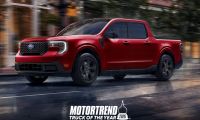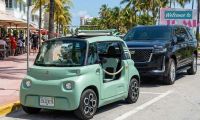Rawlinson's goal for Lucid Motors to offer a $50,000 electric vehicle by the year 2023 is a laudable goal, but one that simultaneously reflects the paradoxical nature of the EV market.
Rawlinson's statement to ABC News is grounded in reality. Developing a $50,000 EV by 2030 is a formidable challenge, requiring significant time, resources, and technological advancements. Lucid, a company that has made waves with its luxury electric sedan, the Air, is clearly committed to expanding its market reach and offering more accessible options to a wider audience. This endeavor embodies the broader transition toward sustainable transportation, fostering competition and innovation in the electric vehicle sector.
However, the paradox lies in the timing and competition.
As Lucid endeavors to create a $50,000 EV, Tesla, the pioneering force in the electric vehicle industry, continues to lower its prices. Thanks to generous tax credits and state incentives, Tesla's vehicles are already available at a fraction of their original cost. By 2030, Tesla could potentially be offering the cheapest EVs on the market, making Lucid's $50,000 goal appear relatively high.
In the eyes of automotive enthusiasts and industry observers, this paradox sparks a fascinating debate. Some argue that Lucid should consider strategic partnerships with tech giants like Apple or Google to accelerate their progress. Such alliances could bring fresh capital, cutting-edge technology, and unparalleled market expertise to the table, potentially helping Lucid achieve its goal faster. However, partnerships of this nature are complex and uncertain, often requiring substantial time for negotiation and integration.
On the flip side, there's a prevailing sentiment that Lucid might be running out of time. With established players like Tesla, traditional automakers, and newer entrants rapidly expanding their EV portfolios, the window of opportunity for Lucid to establish itself as a dominant force in the market is closing. By 2030, they may indeed find themselves facing an uphill battle, with car-buyers already accustomed to established brands and their more affordable offerings.
Media outlets have also weighed in on this paradox. While some applaud Lucid's determination to democratize EVs and offer a $50,000 model, others raise concerns about their ability to execute this vision effectively. Headlines vary from "Lucid's Ambitious Ascent: A $50k EV by 2030" to "Can Lucid Catch Up with the EV Giants?" The media's mixed sentiments reflect the ongoing debate in the industry and among consumers.
Lucid's pursuit of a $50,000 EV by 2030 is both commendable and paradoxical. It signifies the company's commitment to making EVs more accessible, but it also highlights the challenge of competing in a rapidly evolving market dominated by Tesla and other established players. Whether Lucid can overcome this paradox and emerge as a formidable contender remains to be seen, but one thing is certain: their journey will continue to captivate the world of electric vehicles and keep us all eagerly watching for the resolution of this electrifying paradox.
Where do you think Lucid and Tesla will be in 2023? Let's talk about that in the comments section below.
Armen Hareyan is the founder and the Editor in Chief of Torque News. He founded TorqueNews.com in 2010, which since then has been publishing expert news and analysis about the automotive industry. He can be reached at Torque News Twitter, Facebok, Linkedin and Youtube.











